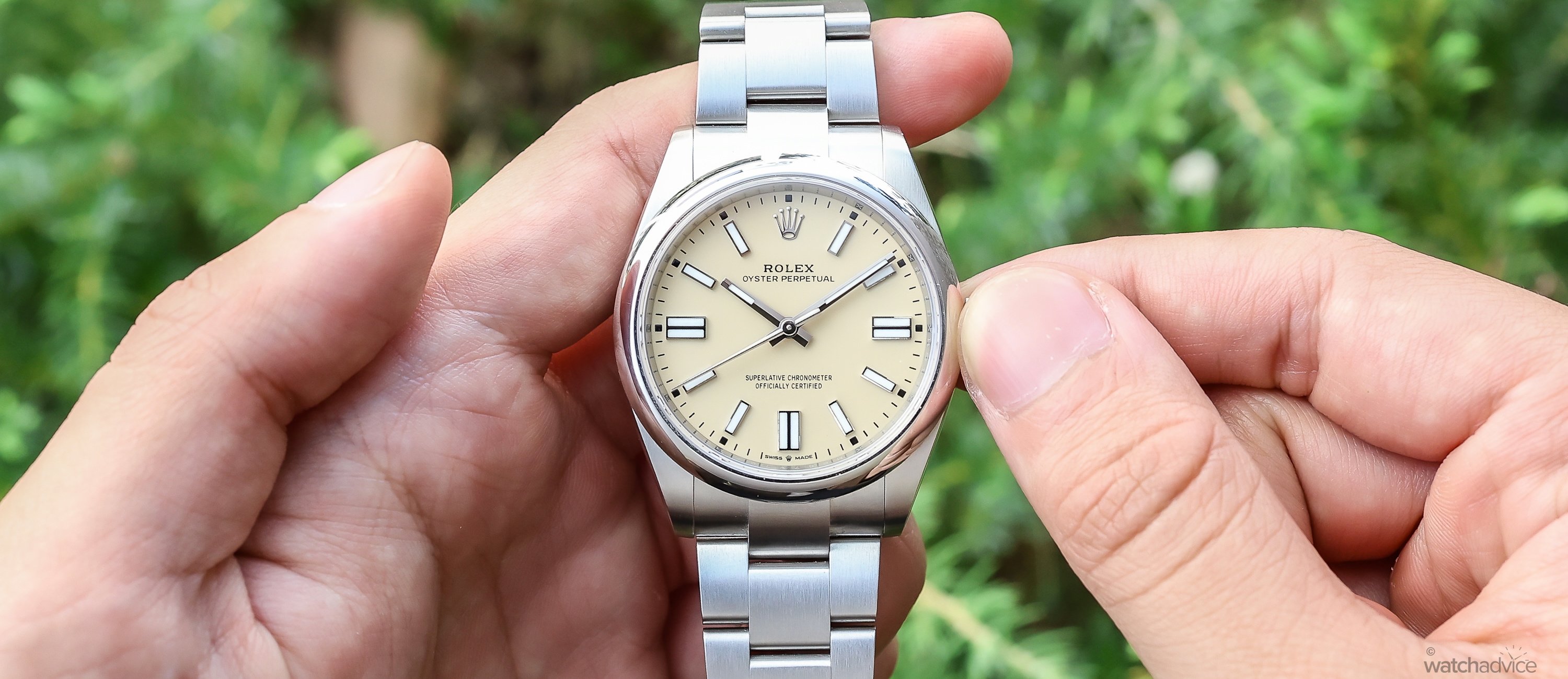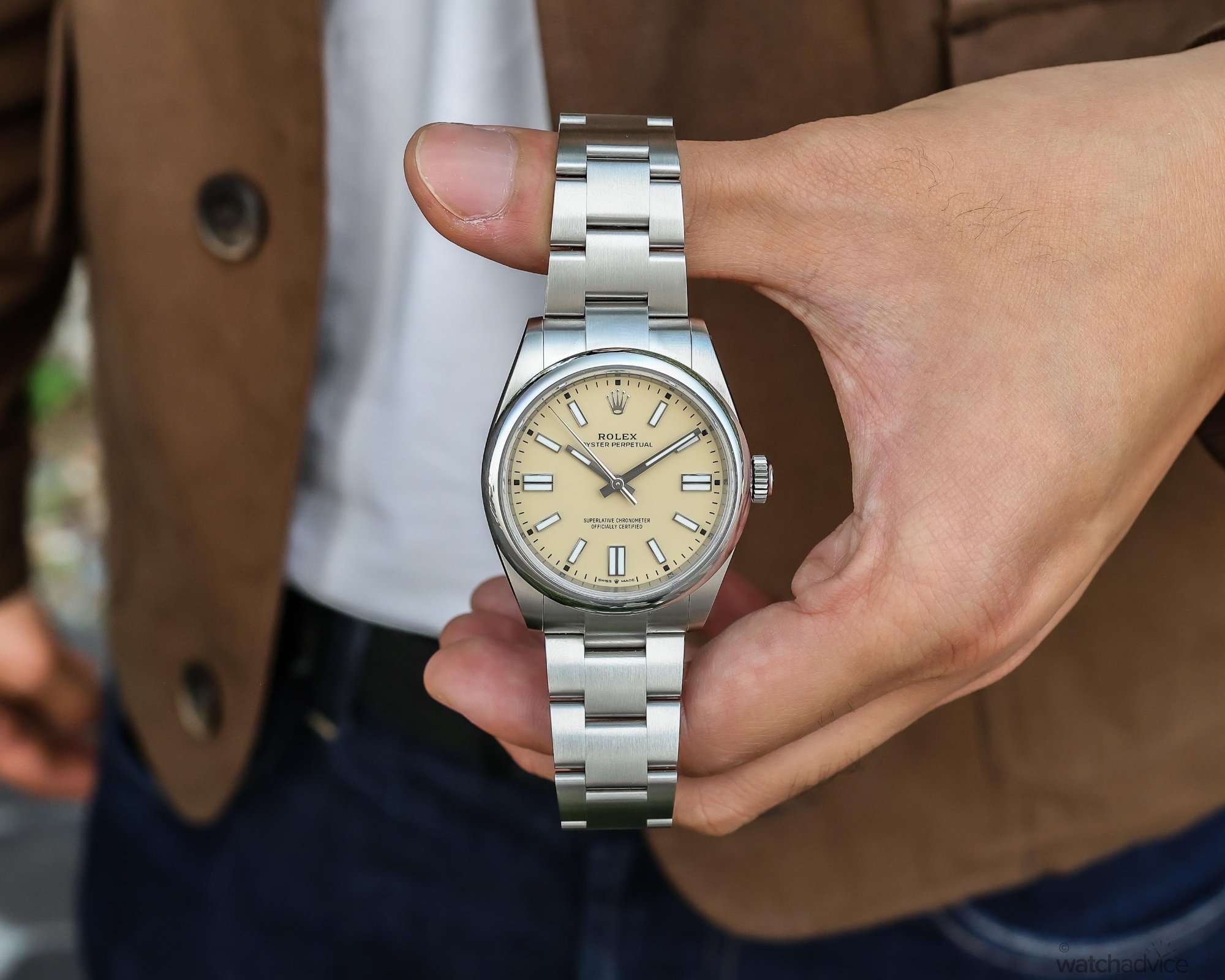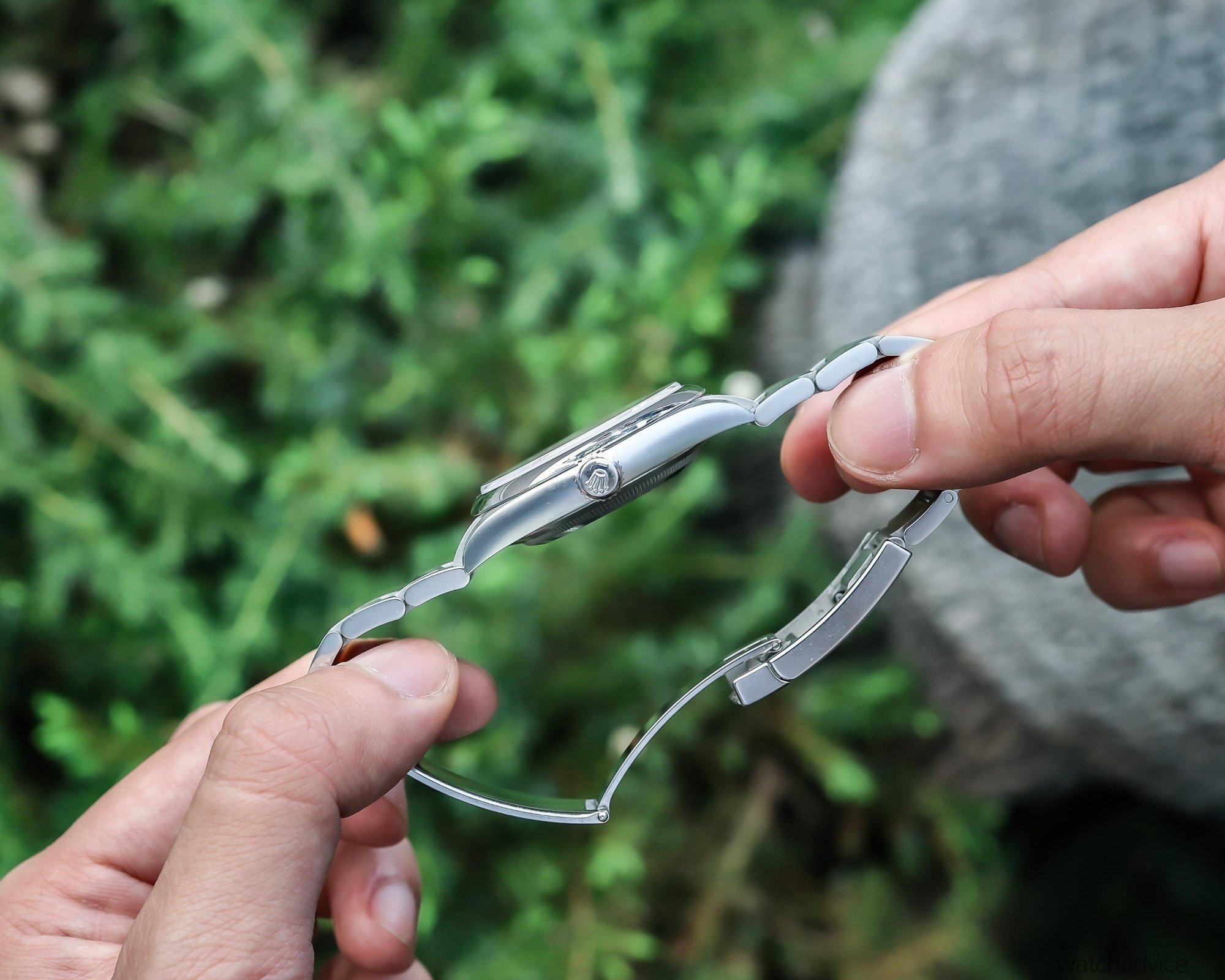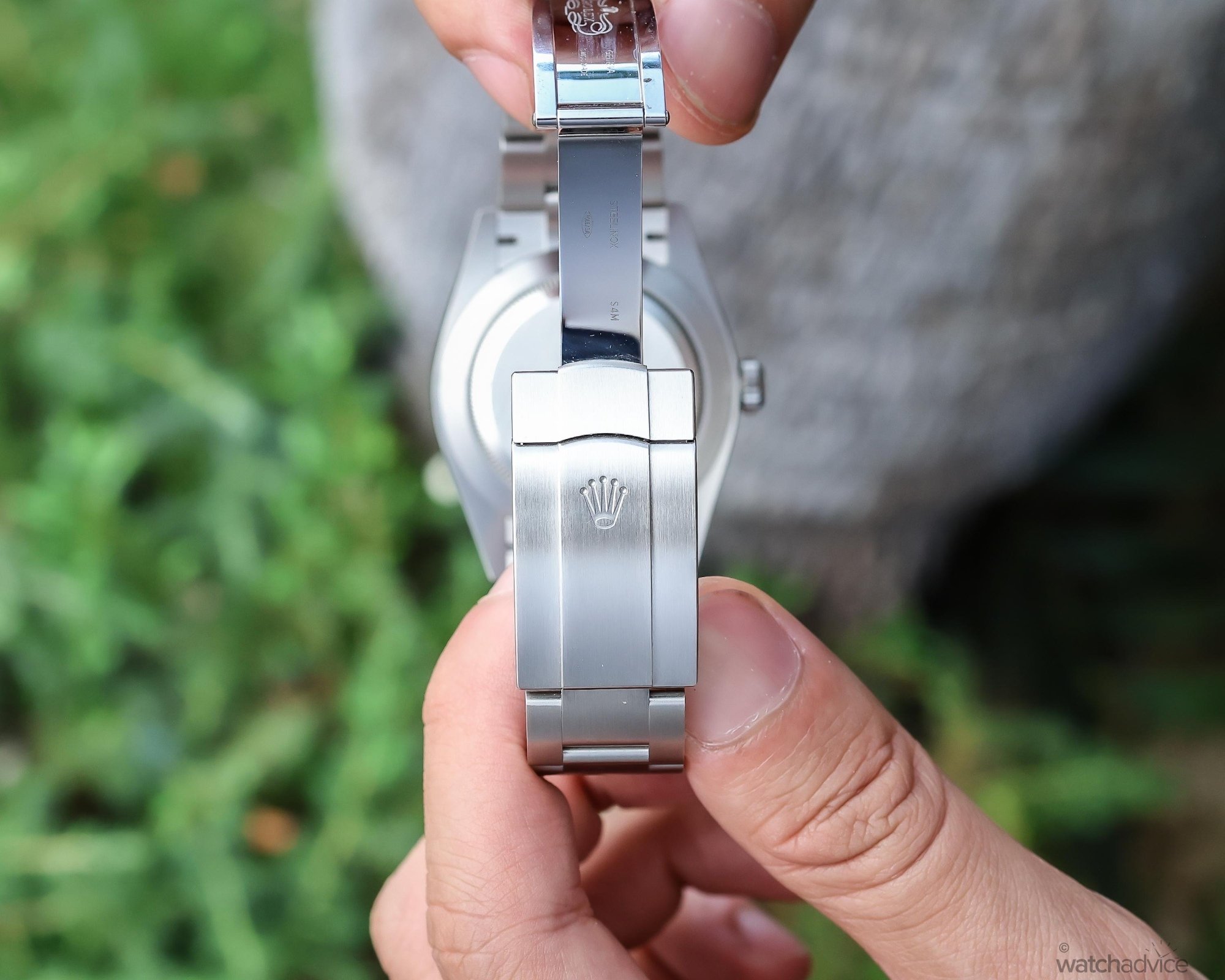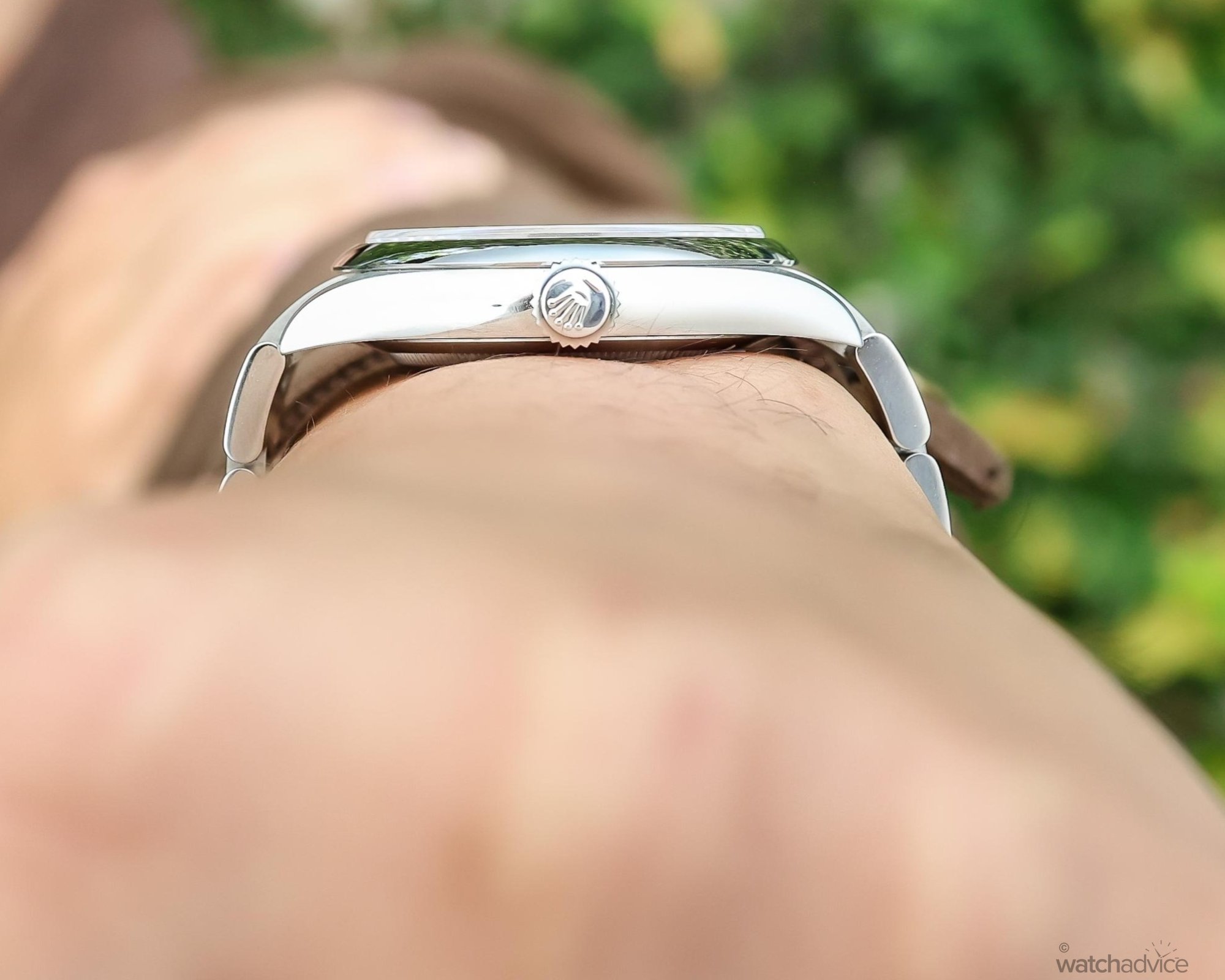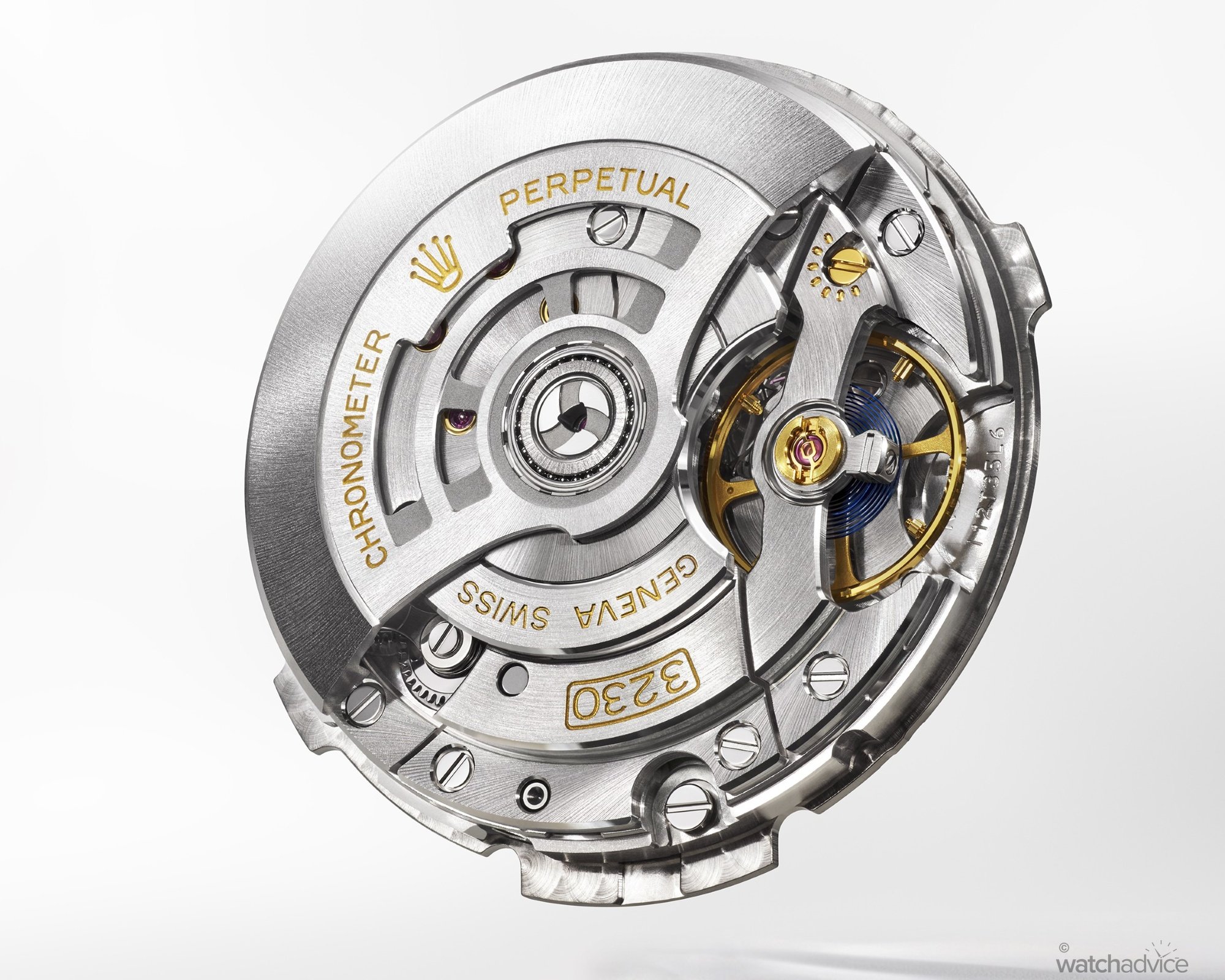In a roster packed to the rafters with hype-laden icons, the Rolex Oyster Perpetual is deceptively simple. Or is it too simple? Let’s find out!
What We Love:
- Simplistic, no-nonsense design and colour
- Solid, unobtrusive wearability
- A true GADA (Go Anywhere, Do Anything) watch
What We Don’t:
- Overshadowed by other Rolex models
- Lacks modern quality-of-life updates
- Date or no date?
Overall Rating: 8.5/10
- Value for Money: 8/10
- Wearability: 9/10
- Design: 8/10
- Build Quality: 9/10
Consistency is a hard thing to come by in the watch industry. Very few brands have managed to achieve it, and even fewer watches can truly be called consistent hits. Off the top of my head, I can probably name only a handful of brands and models that have managed to not only succeed but hold that sweet spot. Longines, Vacheron Constantin, and even Panerai all come to mind — but if you want to talk about longevity, you have to talk about the Crown.
Since their founding in 1905, Rolex has been one of the most consistent brands in history. The numbers speak for themselves: the company has held the number one spot for revenue in the luxury Swiss watch industry since at least 2017, according to the Morgan Stanley LuxeConsult reports.
But the evidence also lies in their catalogue. Much of Rolex’s mainline collection has become inseparable from the brand’s identity, thanks to timeless, slow-changing designs, robust functionality, and uncompromising craftsmanship. Their watches have changed so little over the decades that Rolex timepieces are the most frequently duplicated — and in some cases, outright replicated — in the history of watchmaking.
And among a lineup of icons, there’s one design that perhaps defines Rolex’s success more than any other: the Oyster Perpetual. Rolex’s first named collection, the Oyster Perpetual debuted in 1926 and has remained a fixture ever since. With a highly water-resistant case, a no-nonsense design language, and relative entry-level accessibility, the Oyster Perpetual has loyally served as the brand’s entry point — for those lucky enough to get their hands on one.
However, the 100th anniversary of the Oyster Perpetual is fast approaching, with new additions revealed at this year’s Watches & Wonders. So, I decided to investigate the collection for myself, eager to learn what excites people so about this longstanding staple.
First Impressions
For a watch nerd who has now handled a dizzying array of timepieces, I have to admit I felt somewhat deflated when tasked with reviewing the Rolex OP 41. Not because the experience was disappointing overall, but because I knew it would be a challenge.
Why? Because it’s near impossible to form a genuine first impression of a watch as horologically and culturally ubiquitous as the Rolex Oyster Perpetual. At this point, who doesn’t know what it is? Even if you don’t recognise the name, you’ve seen it in a shop window or on someone’s wrist. And if not, you certainly know what Rolex is.
So what’s left for me to say? Quite a bit, surprisingly. I wasn’t expecting any radical innovations, but I was curious as to why a watch like this manages to captivate so many in the community.
It’s entirely ordinary, with a silhouette that could be mistaken for almost any watch in the world — yet perhaps that’s what makes it extraordinary. When you look at the modern Rolex catalogue, most models scream one word: purpose. Sir Edmund Hillary ascended Mount Everest with an Explorer (depending on who you ask), James Cameron descended the Mariana Trench with the Deepsea Challenge, and Paul Newman clocked countless hot laps with his Daytona.
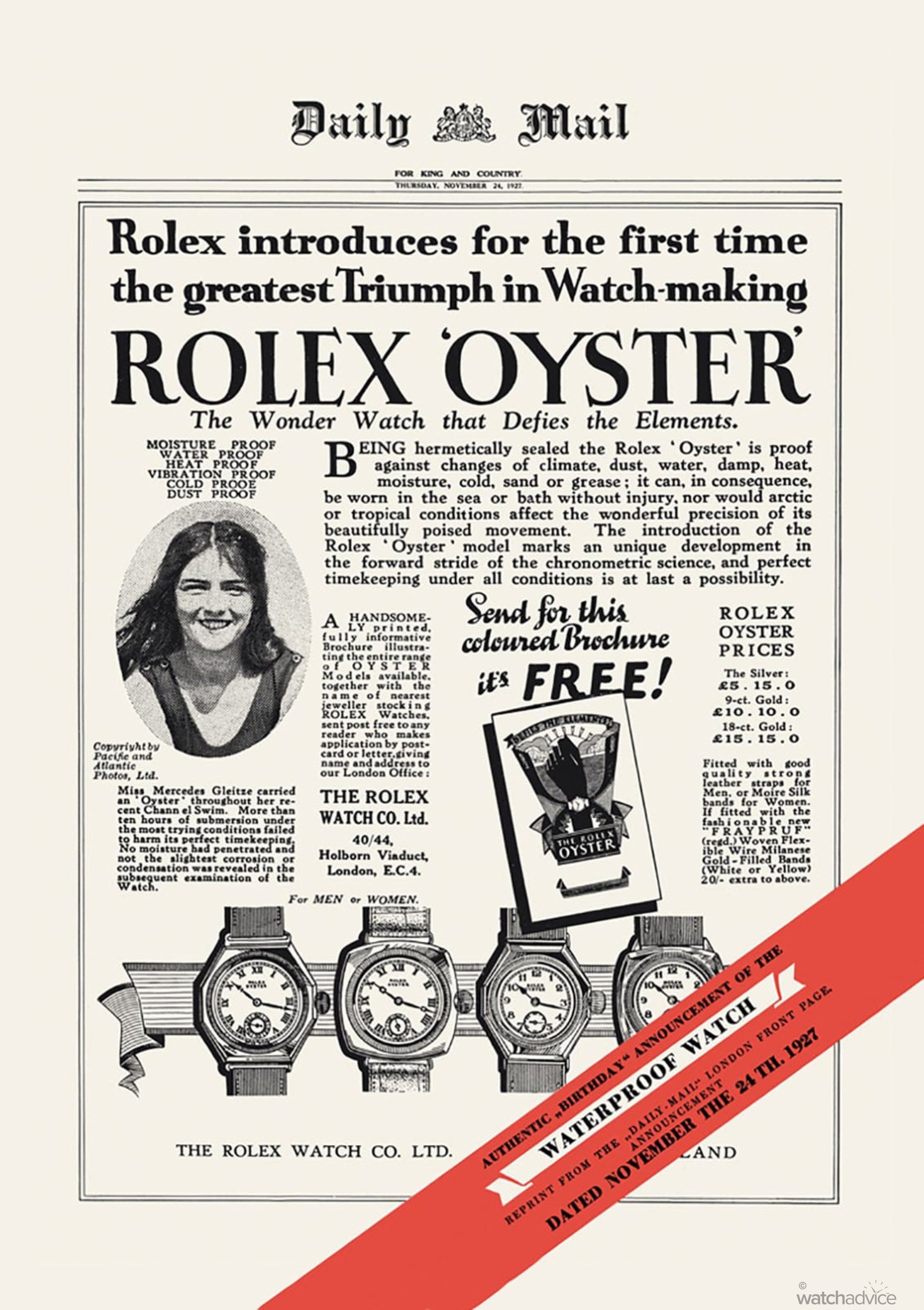
Cover of the Daily Mail, 1927
The cover of this magazine depicts illustrations of Rolex references alongside British swimmer Mercedes Gleitze. Her swims along the English channel helped promote the robustness of the Rolex Oyster case.
Image: Rolex
The Oyster Perpetual, by contrast, almost feels like it has no specific purpose at all. Yet that absence gives way to its most prominent function: The waterproof Oyster case pioneered by the collection. This was the very reason Mercedes Gleitze wore it, and went on to form the foundation of nearly all Rolex case architecture. Thus, aside from the 1908, you’ll see ‘Oyster Perpetual’ inscribed beneath the logotype of almost every single Rolex watch.
Where other Rolex models preach heritage and status, the OP quietly became the most adaptable watch in the brand’s arsenal — the model enthusiasts often describe as the ultimate “one-watch collection.” And given this may well be the first review of the 2025 Beige Dial model in the wild, almost everything I say from here on is, in fact, uncharted.
The Design
While the Oyster Perpetual has remained a constant since the early 20th century, the 2025 Beige Dial rendition maintains the traditional layout while serving as a perfect exercise in luxury watch fundamentals.
We start with the dial, finished in a dusty, matte lacquer beige. Riveting stuff, I know — but this colour feels livelier than most of the dull beiges you’d expect. Instead of evoking 90s corporate offices or The Backrooms, the Rolex dial carries a subtle yellow tint, reminiscent of beach sand or sawdust.
This small twist adds just enough intrigue to what might otherwise be a forgettable colour. Interestingly, the beige dial is the fifth option currently available across every size of the Oyster Perpetual, debuting alongside its companion, Pistachio Green.
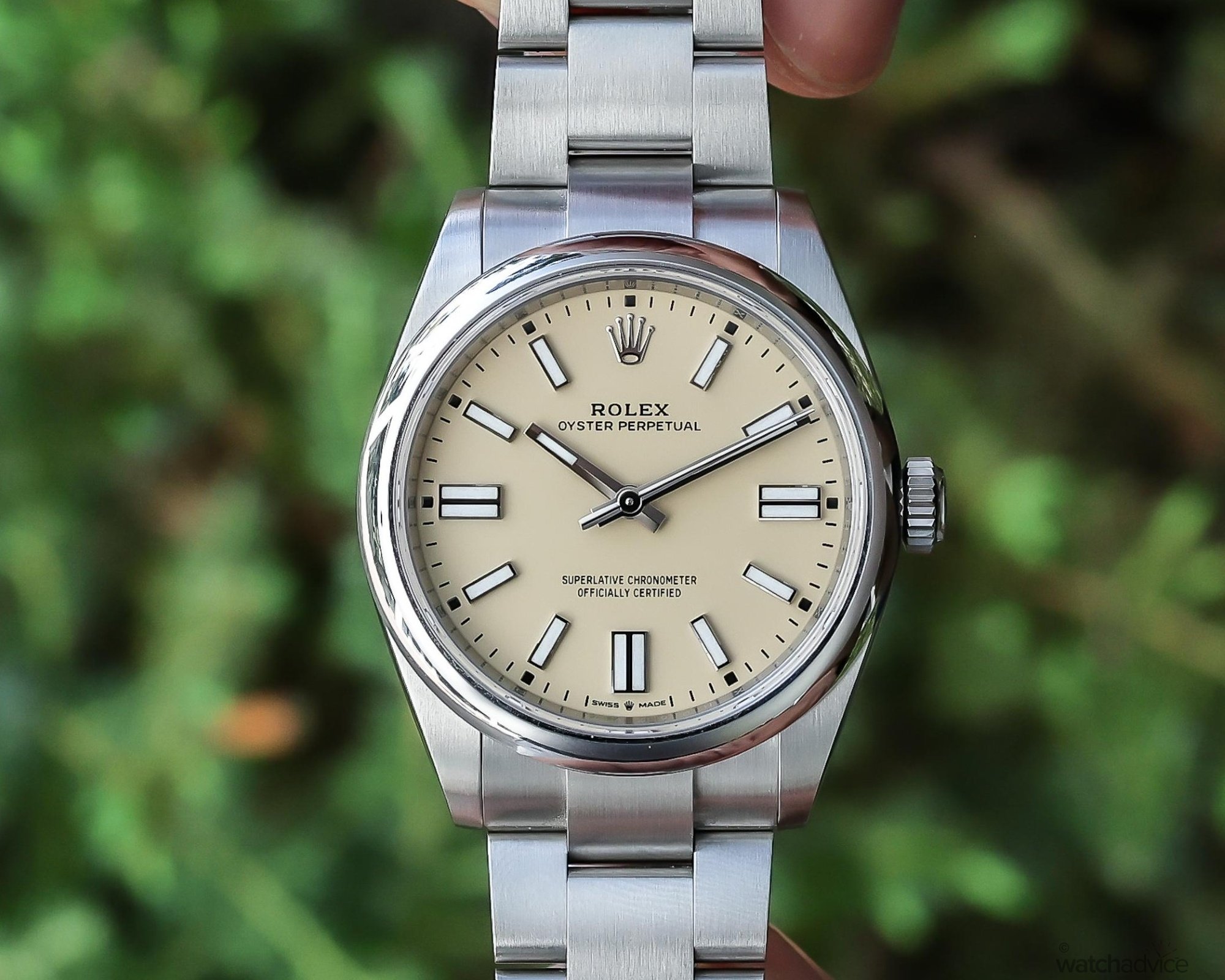
Offsetting the beige are the indexes and hands, which are as straightforward as the dial itself. The polished baton hands are filled with lume, while the rectangular applied indexes follow the same formula. The thick indexes stand out crisply against the beige background, especially at each quarter hour.
Some Rolex enthusiasts have criticised the double-indexed quarter-hour markers, but I find them practical — they make the dial less confusing at a glance. At twelve o’clock, the index is omitted in favour of a polished Rolex coronet. Surrounding the indexes and hands is a simple black printed minute track, with square plots marking each five-minute interval. Beyond that sits the engraved ‘ROLEXROLEXROLEX’ rehaut, which also houses the watch’s serial number.
Moving outward, the design couldn’t be simpler. The bezel is polished — one of the few polished elements of the case — while the rounded flanks, lugs, and bracelet are vertically brushed. The fluted crown carries minimal polish, decorated with the Rolex logo and a single dash denoting the Twinlock Oyster case.
First conceived and patented by Rolex in 1926, the Oyster case is crafted from highly refined alloys, offering exceptional resistance to external wear. Nearly a century on, it remains a defining feature of Rolex design.
Turn the watch over and the minimalist theme continues: a radially brushed solid caseback with subtle fluting and a polished bevel. The clasp is a single-action friction lock with a half-link micro-adjustment, brushed on the outside and engraved with another Rolex crown. Inside, it’s polished and inscribed with the usual Rolex flavour text.
Taken as a whole, the Rolex Oyster Perpetual has always leaned on a generic design language. It’s not especially exciting when it comes to bezels, bracelets, or dials, relying instead on pure fundamentals. Most people — myself included — are often to feel inclined to say that the collection is boring. The likes of the Daytona, GMT Master II, and the new 1908 Settimo cast a long shadow over the Oyster Perpetual’s comparatively humdrum aesthetic.
However, Rolex’s signature elite craftsmanship compensates any perceived lack of flash; Every element here is finished to a remarkable degree. I didn’t find a single flaw or rough edge — aside from my own greasy fingerprints — and that alone deserves serious praise. The Rolex OP 41 2025 Beige Dial doesn’t dazzle with flair, but it delivers impact where it matters most.
How It Wears
The 2025 Beige Dial, ref. 134300, belongs to the newest generation of Oyster Perpetual watches, replacing the outgoing 124300. With the updated reference number comes a few subtle changes to the watch’s profile. While the case diameter remains 41mm and the lug-to-lug 46.5mm, the thickness has been trimmed from 11.7mm to 11.6mm. Hardly ground-breaking, but when combined with sharper lugs, a larger crown, and a slimmer clasp, it’s still a clear refinement over the previous generation.

As far as watches go, the Rolex OP 41 is among the most familiar of all time — the wearing experience isn’t drastically different from any other watch with similar dimensions. That said, it feels remarkably solid on the wrist, thanks to its 904L Oystersteel construction.
For those unfamiliar, 904L Oystersteel is a super-alloy that, compared to standard 316L, is tougher, shinier, and more resistant to corrosion. This naturally makes the watch look and feel the part—a no-nonsense watch, exactly as Rolex intended. Add 100 metres of water resistance, secured by the screw-down Twinlock crown, and the package is as reliable as ever.
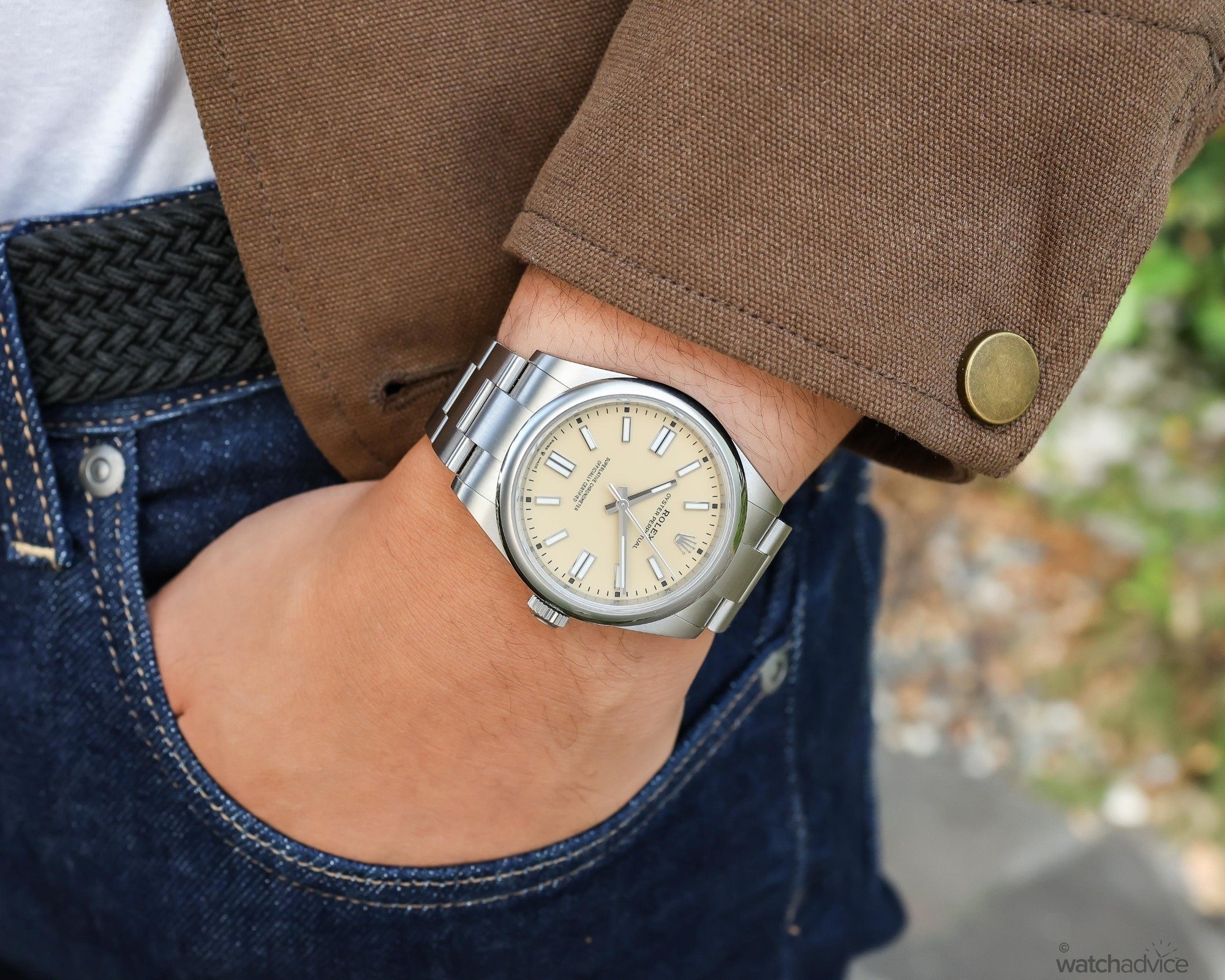
But while the wearing experience is strong, I do have reservations. Rolex isn’t about to lose its dominance in the watch market any time soon, but its quality-of-life updates don’t feel as impactful as they once did. Many modern brands now treat these incremental refinements as a top priority, and while Rolex’s subtle adjustments may be enough for some, they’re beginning to lag behind the industry.
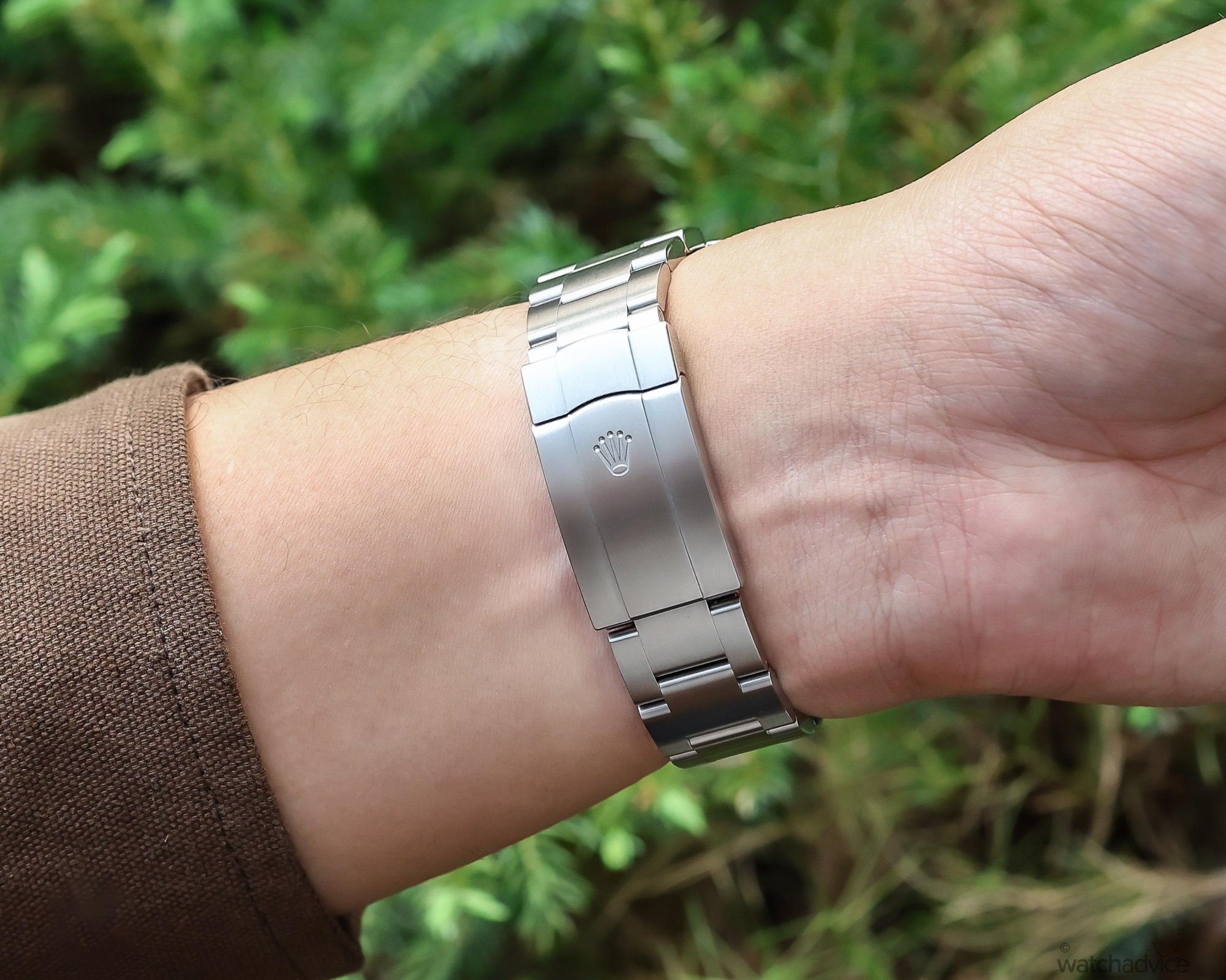
Case in point: the Rolex Easylink. At its introduction, it was revolutionary — an intuitive, cost-effective solution for when your wrist size fluctuated. Yet as more brands pivot towards more dynamic forms of micro-adjustment, like Tudor’s T-Fit, Easylink risks slipping into obsolescence. Rolex has the resources to resolve this by rolling out the Glidelock clasp across the entire range, but whether that will happen — if at all — remains uncertain, given Rolex’s penchant for nonverbalism.
The Movement
While the design and case profile have seen a few updates, the calibre powering the Rolex OP 41 2025 Beige Dial remains unchanged from the previous generation. I’m talking, of course, about the automatic Calibre 3230, which drives a large portion of the no-date models in the Rolex catalogue. It’s arguably one of the best standard luxury movements available, beating at 4Hz (28,800VpH) with a solid 70-hour power reserve.
Like all Rolex movements, the Cal. 3230 is both COSC-certified and Rolex Superlative Chronometer-certified. In practice, that means it doesn’t just meet COSC standards but exceeds them — guaranteeing accuracy within two seconds of deviation per day, compared to COSC’s four to six. It’s an impressive level of precision that has become the baseline expectation for any Rolex timepiece.

This accuracy is largely thanks to two components. The first is the Chronergy escapement, which I discussed in my 1908 review — it reduces energy loss at the escapement wheel, contributing to efficiency and power reserve. The second is the hairspring. Unlike the 1908, which uses Syloxi, the OP 41 2025 Beige Dial employs a Parachrom hairspring. A Rolex-patented alloy of niobium and zirconium, Parachrom was developed not only for its superior antimagnetic properties but also to reduce Rolex’s dependence on Nivarox-FAR, the Swatch Group company that supplies most of the industry’s hairsprings.
However, a possible point of contention is the lack of a date window on the Oyster Perpetual. It’s a complication that feels almost omnipresent across the watch industry, and it’s one that first-time buyers might reasonably expect from their Rolex. The easy retort for most is “Just buy a Datejust!” — but of course, it’s not that simple.
The Datejust is Rolex’s best-selling model, which makes it even harder to obtain if you’re familiar with Rolex’s business model. On top of that there’s currently around a minimum AU$3,000 premium over the Oyster Perpetual for what is, ostensibly, a single addition. For most of us — unless your surname is Swift, Bezos, Musk, or Ellison — that’s a big price jump for an industry standard feature, and it could be enough to push some buyers away from the OP altogether.
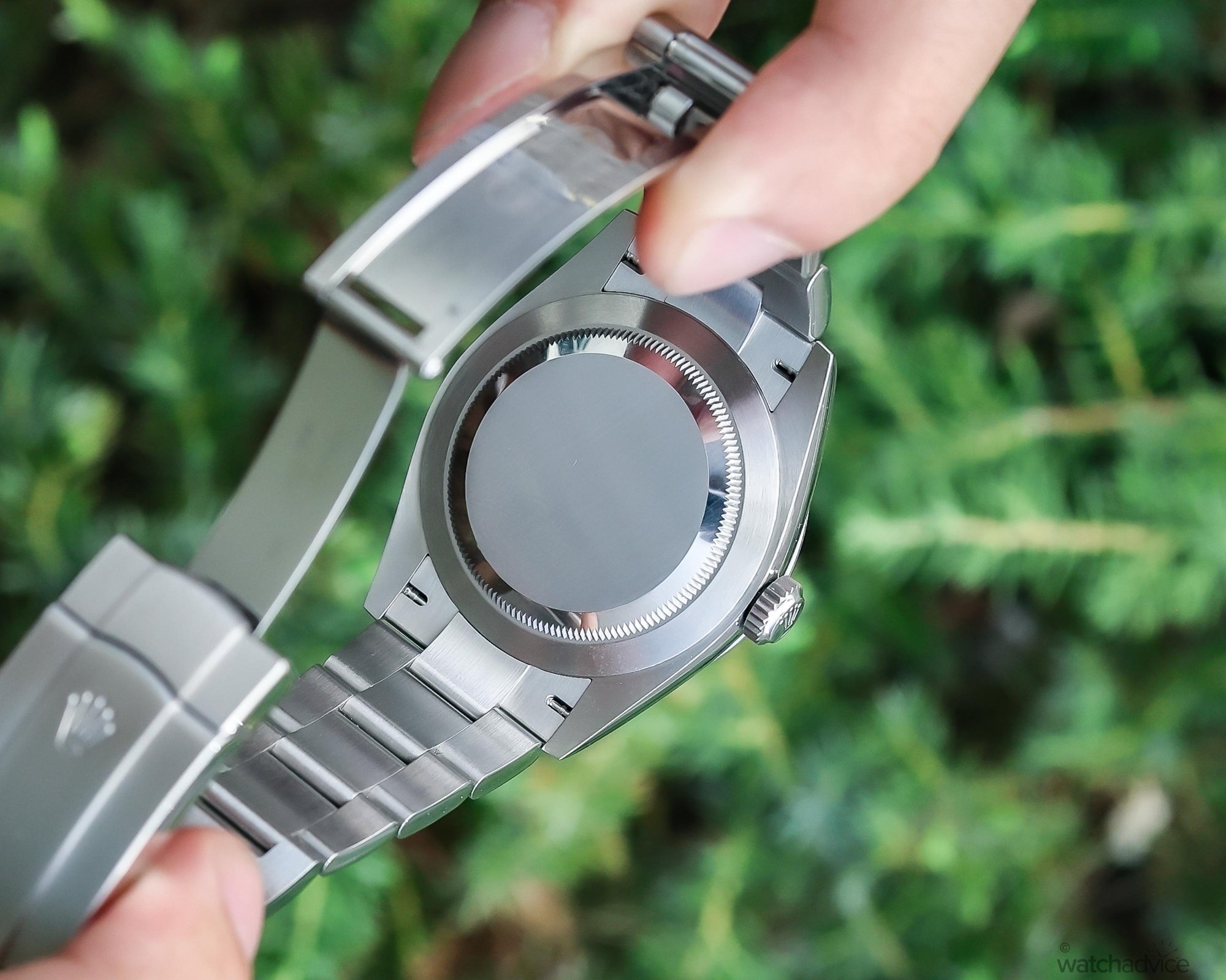
Beyond that, the only other frustration is one enthusiasts have long come to accept: you’ll never see the Cal. 3230 in action behind the solid caseback. Aside from special editions and the Cellini/1908 lines, Rolex doesn’t put movements on display, preferring instead to let performance speak for itself.
Final Thoughts
The Oyster Perpetual is one of the few Rolex lines that invite the idea of a ‘one-watch collection.’ Most of Rolex’s icons are specialists — the Submariner is built for diving, the Explorer for mountaineering, the Daytona for motorsport. Each excels in its lane, but that specificity makes them less adaptable outside their intended context.

The OP, by contrast, is a jack of all trades. It doesn’t shout about functionality or heritage — it simply offers the core Rolex experience in its purest form. Its versatility means it can credibly fill multiple roles: casual enough for everyday wear, refined enough to pass as a dress watch, and robust enough to take a knock or two without worry.
Like Kamaru Usman dominating the UFC welterweight division, or Tim Duncan quietly becoming one of the greatest power forwards in basketball, the Rolex Oyster Perpetual knows what it needs to do and executes it near-flawlessly.
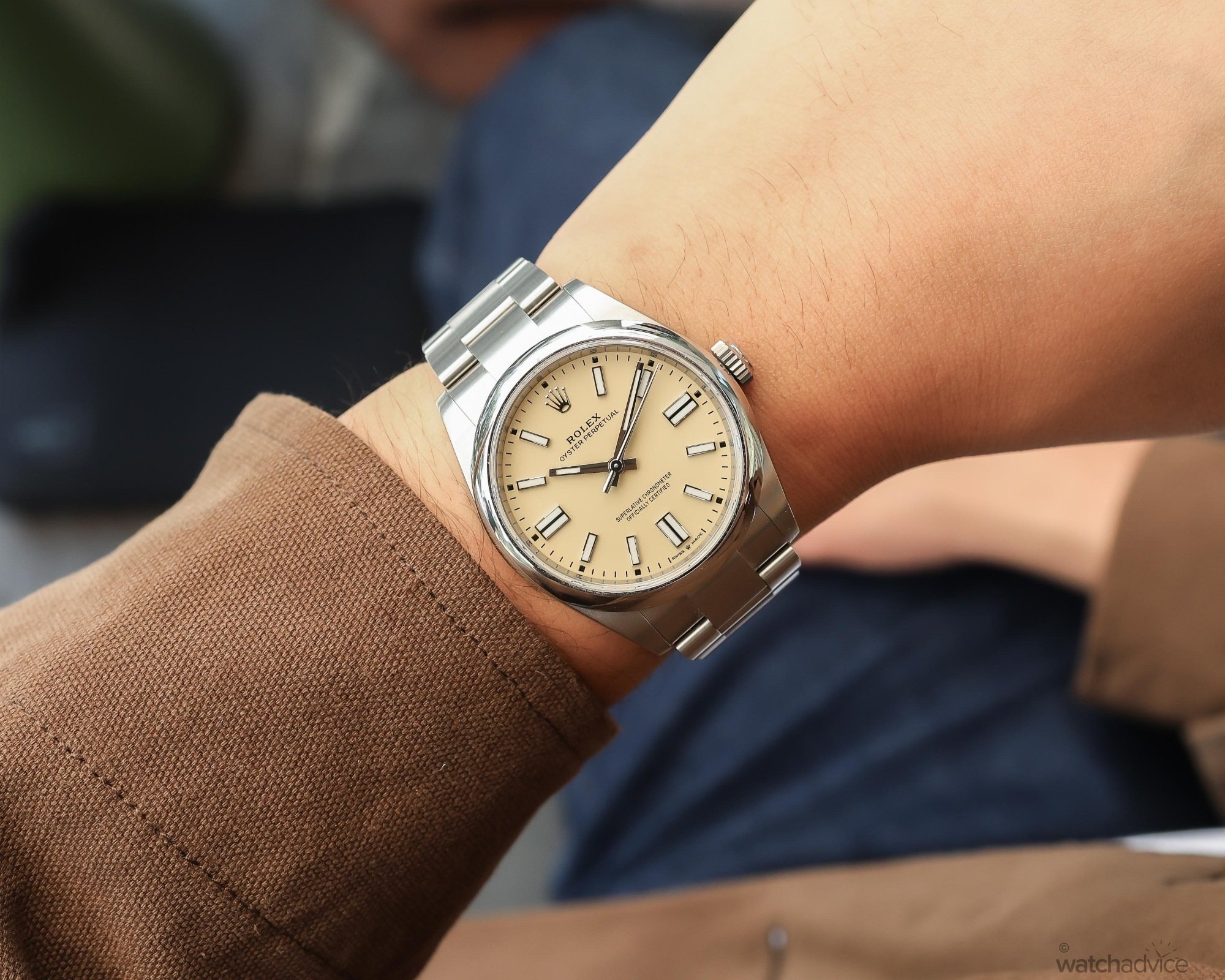
However, being Usman or Duncan can only get you so far — there’s always a Leon Edwards or a Kobe Bryant right around the corner. In the modern watch space, the OP’s value proposition does come into question; AU$11,300, is a lot to ask for a timepiece that offers very little beyond excellent fundamentals.
The METAS-Certified Omega Seamaster Railmaster occupies a similar category at a more palatable AU$9,725, while the AU$13,000 Cartier Santos Medium and AU$13,900 Grand Seiko SBGY013 offer more aesthetic intrigue than the 2025 Beige Dial.

But there’s still that inherent catch: Excellent fundamentals. Usman beat Edwards in their first matchup, Duncan maintains a winning record over Bryant, and the same applies to the Rolex Oyster Perpetual. Its greatest weaknesses are often subjective rather than objective, and its build quality elevates it above most competitors at a similar price point.
The recognisability and subtle collectability of the line also remain intact, as much as it remains a stalwart daily driver. In a world where many watches try to do more, the Oyster Perpetual quietly demonstrates the pleasures of doing less. Efficiency is just clever laziness, after all, and the OP 41 is as efficient as watch designs get.
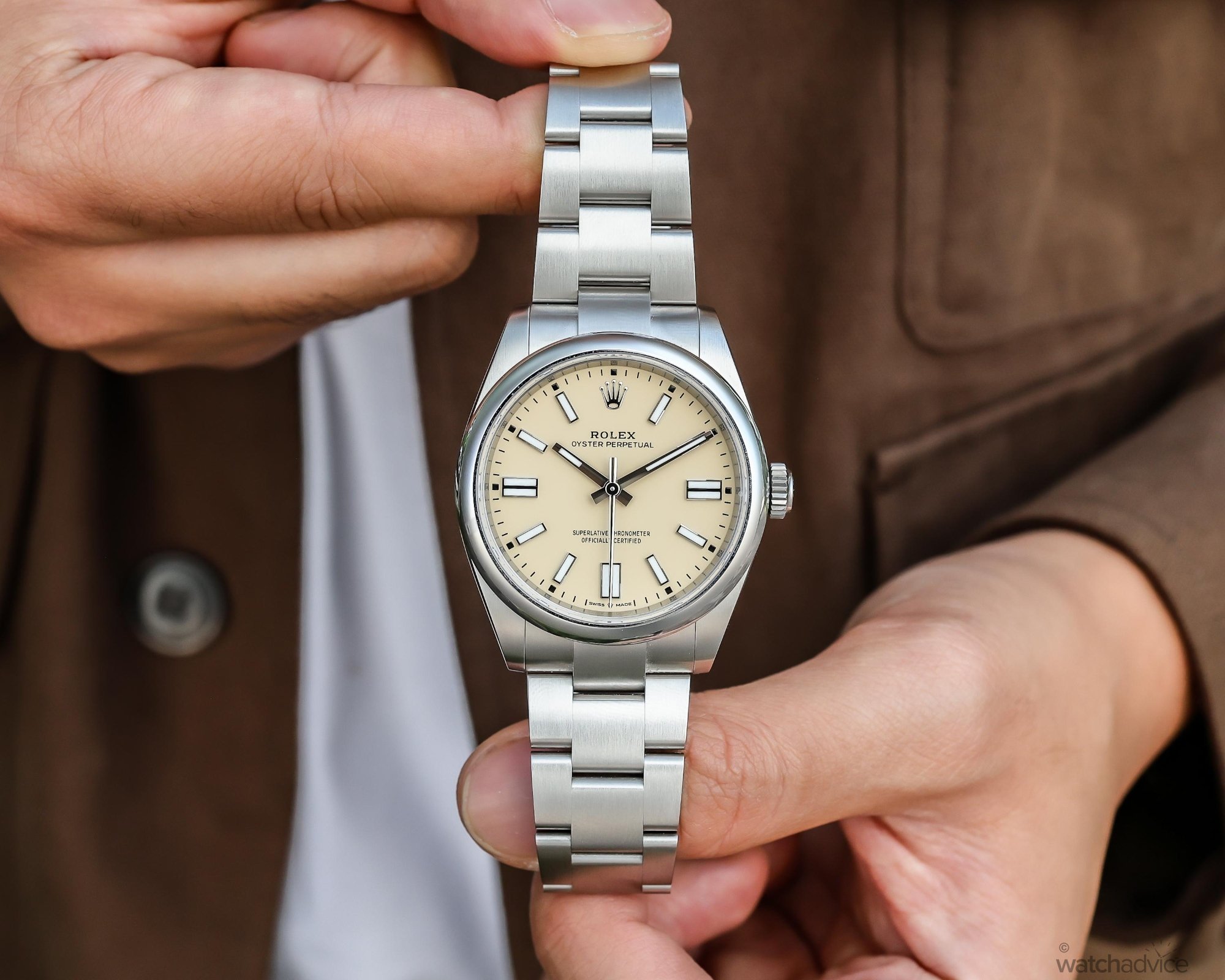
There’s something refreshing in that. For collectors, there’s always the temptation to ‘cover all bases’ — buy a diver, a dress watch, a chronograph, maybe a GMT. But the Oyster Perpetual quietly challenges that mindset. It asks whether one really needs a full lineup when a single, well-made watch can do almost everything on its own.
In that sense, the OP 41 is Rolex stripped of its hype. It has no specialist lore, nor any braggadocious status symbolism — just the brand’s design language and standards distilled into one reference. And if there were ever a Rolex that could reasonably be the only watch in an enthusiast’s repertoire, the Rolex Oyster Perpetual 2025 Beige Dial would be it.
Reference: M134300-0007
Specifications
- Dimensions: 41mm case diameter x 46.5mm lug-to-lug x 11.6mm thick
- Case Material: 904L Oystersteel
- Dial: Matte lacquer beige
- Movement: Automatic Cal. 3230 with Parachrom hairspring, Chronergy escapement, COSC & Rolex Superlative Chronometer Certification
- Beat Rate: 4Hz (28,800VpH)
- Power Reserve: 70h
- Water Resistance: 100m (10bar)
- Strap: Steel three-link Oyster bracelet with folding clasp & Easylink micro-adjustment
Australian RRP: AU$11,300
Availability: By inquiry only, in-store or online at all authorised retailers. For more information, visit Rolex.com.
Image Gallery
